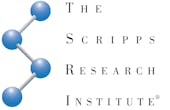My scientific vision is to transform our understanding of how cells overcome stressful conditions. In particular, I am interested in illuminating the molecular mechanisms of macromolecular machines that play essential roles in quality control throughout the cell. Moreover, I want to uncover how chemical modulators and diverse binding partners can alter the function of quality control machines in the hopes of expanding our understanding of disease. To realize my scientific vision, I aspire to become faculty at an esteemed R1 research university and apply my toolkit of microscopy techniques: 1) cryo-electron microscopy, 2) cryo-electron tomography and 3) super-resolution microscopy to reveal the molecular machines capable of trafficking and processing both biological and environmental toxins. My commitment to this dream has led me to work at 8 academic institutions, collaborate on projects with over 4 international institutions, and present my work all over the world, ranging from Saudi Arabia to Germany. As an undergraduate fellow at the California Institute of Technology, I was exposed to the wonders of microscopy by constructing a time-lapse imaging incubation system to examine mechanical strain on connective tissue. I became motivated to apply cutting-edge technology to address the most pressing health concerns. As a postbaccalaureate scholar at the National Institutes of Health, I investigated the effects of ubiquitin-specific proteases redirect the trafficking of nutrient transports from the plasma membrane to the lysosome. Through this immersive scientific experience, I was exposed the exciting field of intracellular trafficking and fluorescence microscopy as a powerful tool to visualize fundamental processes. Working at the NIH inspired my core scientific value: pursue basic research to enhance human health, and in particular for individuals from underrepresented and underserved populations.
My passion for basic science and social justice led me to pursue my doctoral studies at the University of California, Berkeley with Dr. Eva Nogales, a world-leader in the railroad tracks of intracellular trafficking: microtubules and a powerful visualization technique called cryo-electron microscopy (cryo-EM). My first project identified that acetylation stabilizes microtubule structure and is a novel prognostic marker for breast cancer. Additionally, by visualizing the modification site of this post-translational modification, I resolved the final, highly flexible region of the essential molecule tubulin. Building upon the experience I gained in macromolecular 3D visualization, I discovered the first structure of microtubule-associated protein 7 (MAP7) and describe how MAP7 directly regulates tau aggregation, a hallmark pathology of Alzheimer’s disease. Thanks to these two projects, I honed technical skills in 3D structure determination and solidified a collaborative network with expertise in protein biochemistry, molecular dynamics, single-molecule biophysics. In addition to the fantastic research skills I developed at UC Berkeley, I gained extensive teaching skills by serving a Graduate Student Instructor for biology, biochemistry and structural biology undergraduate courses. Furthermore, in collaboration with Dr. Susan Marqusee and Dean Michael Botchan, I founded and directed a program called inclusiveMCB to create an inclusive institutional culture within the Dept. of Molecular Cell Biology, which elevated my leadership, strategic planning, and negotiation skills.
Now, as a postdoctoral scholar at the Scripps Research Institute, I am ecstatic to expand my scientific toolkit and pursue brand new biological system: the mitochondria. Notably, I am fascinated by mitochondrial diseases, or mitochondriopathies, that annihilate high energy tissues, and, in particular, eye tissue. Dominant optic atrophy (DOA), or the deterioration of the cells that comprise the optic nerve, is one of the most common hereditary atrophies, however, the molecular mechanisms that govern this disease remain elusive. DOA-associated mutations are directly associated with optic atrophy factor 1 (OPA1), an inner mitochondrial membrane (IMM) protein that drives essential mitochondrial dynamics. Under the mentorship of Dr. Gabriel Lander and Dr. Luke Wiseman, I am applying a structure-function approach to study a key regulator of OPA1, the IMM quality control protease: YME1L, or the swiss-army knife of mitochondrial proteostasis. With substrates ranging from misfolded membrane proteins to lipid transporters to metabolite carriers, YME1L can dramatically and rapidly rearrange the mitochondrial proteome. I am committed to understanding how YME1L selects its substrates and how stress can modulate this essential decision-making process using protein biochemistry, functional assays, cryo-EM, and computational tools. I am confident that I will receive the training I need to excel as an independent scientist at a world-renowned institution.
Experience
-
–presentPostdoctoral Scholar , The Scripps Research Institute
Education
-
2019UC Berkeley , Molecular Cell Biology
- San Diego, California, U.S.
- Website
- @lisaeshunwilson
- Article Feed
- ORCID
- Joined


